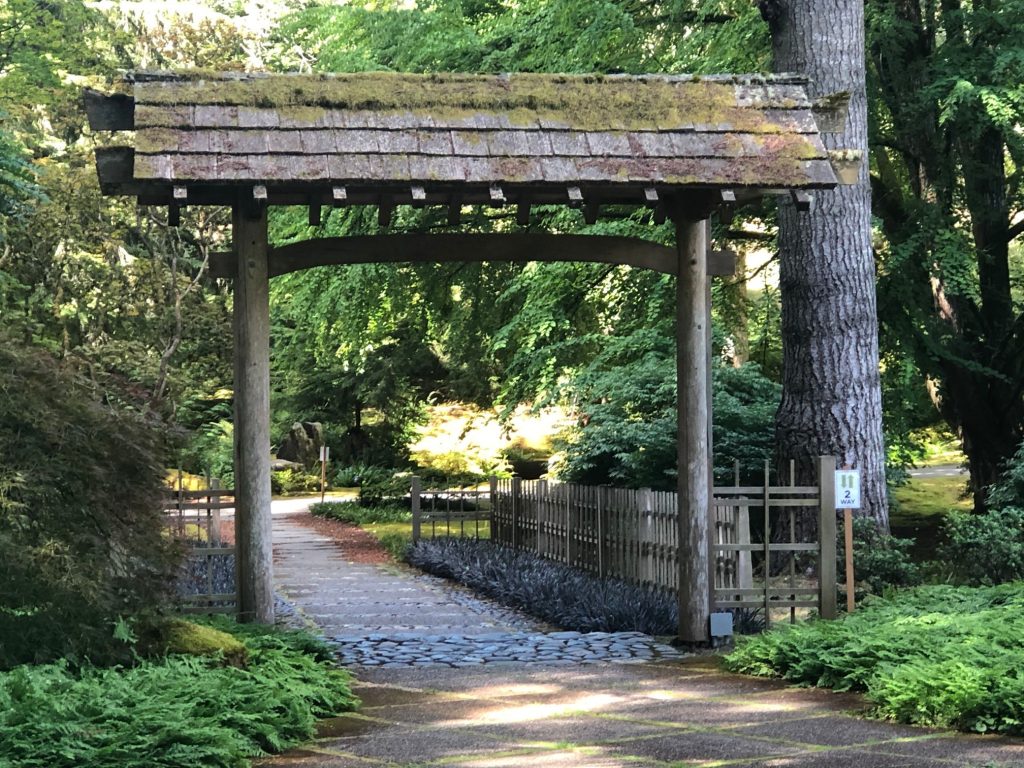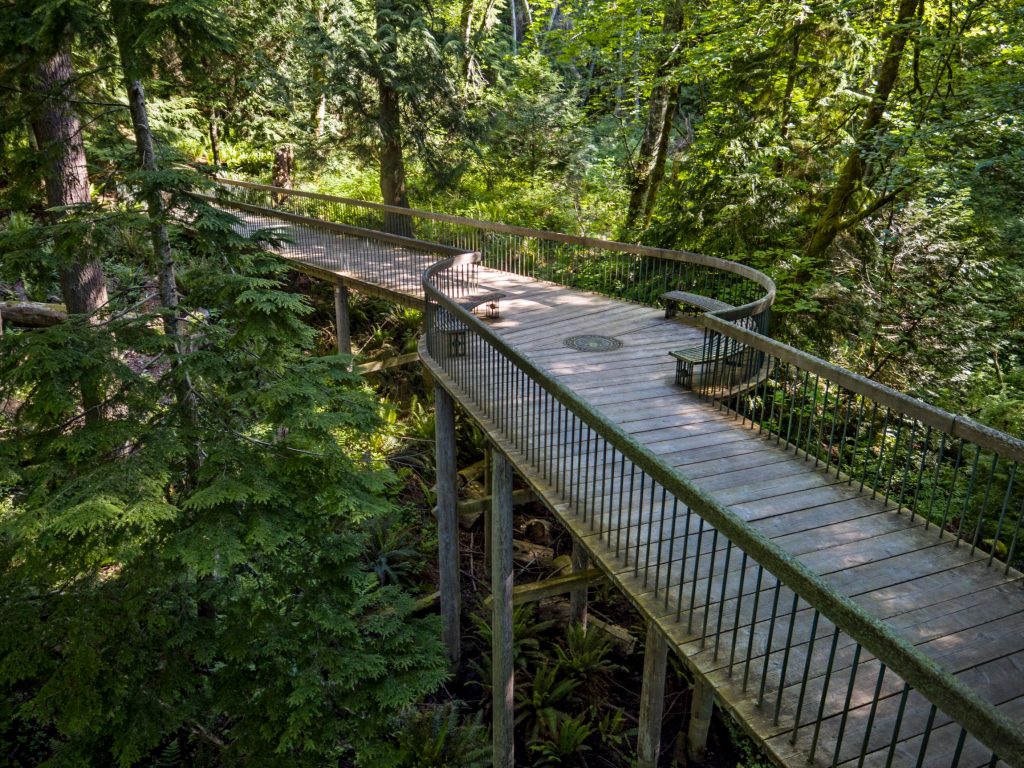
Find your Zen at Bloedel Reserve

Nature can be a soothing balm, providing opportunities to rejuvenate body, mind and spirit. During challenging times, escaping to the great outdoors is even more essential to our health and well-being.
We are fortunate in this country to have a wide variety of natural playgrounds. Though mountains, parks and beaches come foremost to mind, gardens also offer space to unwind and relax amid serene surroundings.
A short ferry ride from Seattle will lead you to Bainbridge Island, an idyllic destination that’s home to the famed Bloedel Reserve. One of USA Today’s 2020 Top Ten Botanical Gardens, Bloedel’s vision is “to provide refreshment and tranquility in the presence of natural beauty.”
The Reserve is a horticultural treasure that has been internationally recognized for its refined gardens, natural landscapes and preserved forests. It was created by Prentice and Virginia Bloedel, whose passion for nature and its therapeutic powers helped transform a rugged piece of land into a verdant Eden.
The Bloedels bought the 150-acre property that would become the Reserve back in 1951. It was their private residence for over thirty years, during which time, they shaped the landscape with the aid of noted landscape architects and designers, including Thomas Church, Richard Haag, Fujitaro Kubota and Iain Robertson.
Later, the couple gave the Reserve to the community and established a nonprofit to support its operations. The place opened to the public in 1988, and it is beloved by visitors who come from all over the world to connect with nature, while finding inspiration and creativity from this enchanting setting.
Strolling the grounds is a journey of discovery and a feast for the senses. Each section of the Reserve offers a different, multi-textured milieu. On the Meadow Trail, you’ll come across Sheep Sheds that used to house a flock of sheep. The sheep are long gone, but the sheds have since served as a backdrop for concerts and theatrical performances.
The Woodlands is like a fairyland forest, where you can almost imagine elves popping out of the groves of cedars, firs and ferns.
Nesting birds, migratory and resident ducks, geese and colorful dragonflies take center stage in the Buxton Bird Marsh & Meadow, along with more than fifty varieties of native wildflowers. Recent improvements to the area include a new boardwalk, viewpoints and seating. Nearby is the Trestle Bridge, a picturesque large wooden footbridge spanning a ravine.
One of the most stunning sights in the Reserve is the view of Mid-Pond looking toward the Residence, once the home of the Bloedels. At first glance, the water appears as a lush, green carpet, that is perhaps the result of algae growth. After inquiring, however, I learned it’s not algae, but rather Watermeal, a tiny species of flowering plant. This plant quickly reproduces by “budding off” new plants from older ones instead of propagating by seeds.
Normally, Bloedel’s ground crew skims the pond, but this year, due to the pandemic, the crew was behind in its garden work. In the future, the Watermeal should decrease thanks to the introduction of Grass Carp, a type of fish which will eat the plants.
The Residence is a handsome, stately house, designed in the 18th-century French tradition. Previously, visitors could tour the first floor, but currently the building is closed, and all programs that are normally held on site have been cancelled. You can, however, stroll around to the back of the home, which overlooks the Bluff and a picturesque view of Puget Sound.
Another favorite spot is the Japanese Garden and Japanese Guest House. The garden is regarded as one of the best in the country and contains a collection of beautiful trees, including a striking laceleaf maple and a large Katsura that offers an array of colorful foliage throughout the year. And there’s even a Wishing Bench, perfect for making a wish or enjoying this lovely scene.
The Guest House, which served as quarters for the Bloedel’s guests, is a melding of Japanese and Northwest Coast Native American Longhouse styles. Though the structure is not open to the public, you can get a closer look by walking along the porch. Make sure to check out the Sand and Stone Garden in front of the house. Originally a swimming pool, it was replaced with a sculpture after famous poet Theodore Roethke accidentally drowned there. In 1987, the sculpture was removed and the Sand and Stone Garden was installed.
This type of garden is one of the most recognizable aspects of Japanese culture. Its clean lines and bare, stripped down form help viewers clear their minds and encourage a meditative state.
If you’re into moss, and even if you’re not, you’ll be in awe of the Reserve’s Japanese-inspired Moss Garden. It’s the largest public moss garden in the U.S. with forty plus species of mosses and lichens spread across two acres. You’ll feel as if you’ve wandered into a primordial realm coated in velvet.
Also popular with visitors is the Reflection Pool. Situated next to the Moss Garden, it’s tucked behind a wall of hedges, so that your first sight is one of breathtaking surprise. The 200-foot-long rectangular pool is surrounded by sheared yews and mowed grass in manicured, formal fashion – quite a stark contrast to the natural forest beyond. This is a quiet spot, also ideal for contemplation.
If you go:
Bloedel is open year-round, Tuesday – Sunday, allowing visitors to explore the different landscapes as they change with the seasons. Timed-entry tickets, booked online in advance, are currently required, as are masks and social distancing.





















































